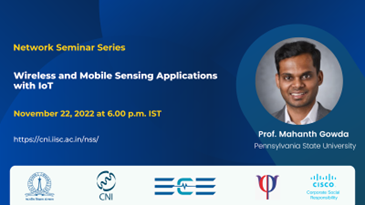
Abstract
Ubiquitous finger motion tracking enables a number of exciting applications in augmented reality, sports analytics, rehabilitation-healthcare etc. While finger motion tracking with cameras is very mature, largely due to the availability of massive training datasets, there is a dearth of training data for developing robust machine learning (ML) models for wearable IoT devices with Inertial Measurement Unit (IMU) sensors. Towards addressing this problem, we present ZeroNet, a system that shows the feasibility of developing ML models for IMU sensors with zero training overhead. ZeroNet harvests training data from publicly available videos for performing inferences on IMU. In another project on wireless sensing, we show the feasibility of identifying liquids by shining ultra-wideband (UWB) wireless signals through them. The core opportunity arises from the fact that wireless signals experience distinct slow-down and attenuation when passing through a liquid, manifesting in the phase, strength, and propagation delay of the outgoing signal. Our results show that we can distinguish coke from diet coke or pepsi, whole milk from 2% milk, and distilled water from saline water by measuring the properties of the wireless signals. Mahanth Gowda, PSU
Mahanth Gowda is an Assistant Professor in Computer Science and Engineering at Penn State. He obtained his Ph.D. from University of Illinois at Urbana Champaign and Bachelors from Indian Institute of Technology, Varanasi. His research interests include wireless networking, mobile sensing, and wearable computing, with applications to IoT, cyber physical systems, and human gesture recognition. He is a recipient of a NSF CAREER Award in 2021 and a best paper award in the Internet of Things Design and Implementation (IoTDI) conference in 2021. He has published across diverse research forums including NSDI, MobiCom, WWW, Infocom, Oakland, ASPLOS, etc. 
